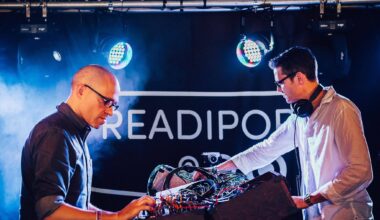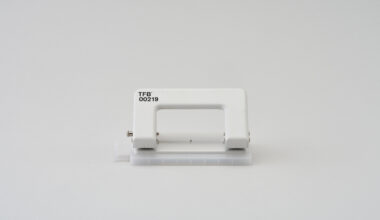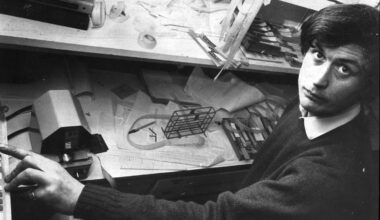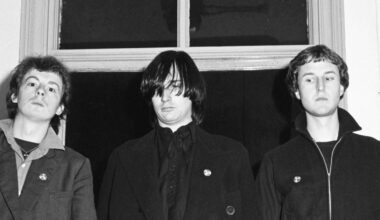Music tech guru Robin Vincent on his conversion – and subsequent addiction to – modular synthesis
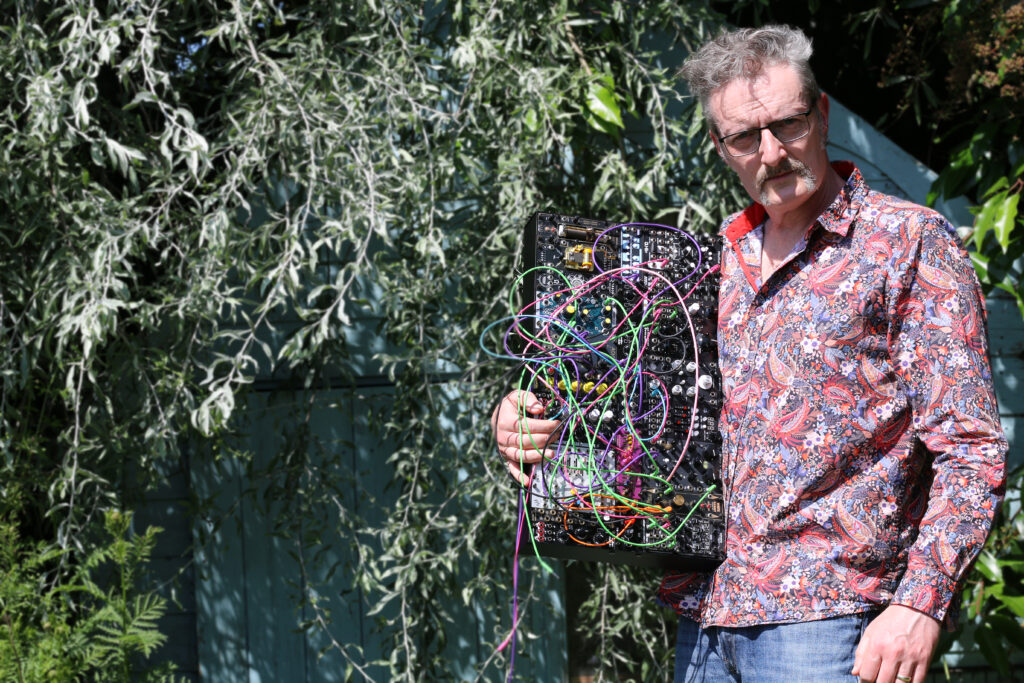
I was bored. So desperately bored. It was 2016, and I had spent the last 20 years squeezing my creativity through about an inch square of my mouse mat. I had taken a job at the Turnkey Music store as a PC product specialist. From there, I sold people the idea that you could do everything through software.
I was a champion of the democratisation of music production through the attainable wonders of the DAW and software synthesisers – I wrote books about it. Everyone could have a studio on their PC. It was exciting and revolutionary. However, at some point, I hit the bottom of whatever barrel I was scraping. I found myself stuck clicking through presets, scratching at the surface of an infinite source of sound.
To shake myself from my software stupor, I took on some work writing news about real synthesisers. In an effort to reintroduce myself to the world of hardware, I booked tickets to SynthFest up in Sheffield.
SynthFest was like some kind of organic entity, throbbing and thriving with beeps and filter sweeps. Every table was ablaze with LEDs winking their way through sequences and glowing with modulations. Every surface was covered in knobs and buttons that invited you in for a fiddle. Waveforms pulsed, melodies danced, and there wasn’t a single laptop to be seen. My little soul lit up as I played with cool analogue synthesisers, and I felt I had come to the right place.
Threaded throughout was this interconnected mismatch of modular, buried under a mass of tangled patch cables. These were intriguing, but much less approachable. If I felt instantly at home with the little semi-modular synths, I felt immediately out of my depth when it came to this Eurorack format. It looked amazing, but it was very intimidating. I wasn’t sure if I was allowed to have a go or if I’d mess something up if I touched it, and I didn’t know how even to begin asking questions about it.
I went along to a seminar all about getting started with Eurorack, but I struggled to understand what was being said. There seemed to be multiple barriers to entry, not least of which was the language and terminology, but also getting the right case and power supply, and knowing precisely what it was I wanted to do.
The question of “knowing” baffled me more than any other prerequisite. I didn’t know what I wanted to achieve – I didn’t really know what modular music sounded like or what sort of music I could expect to make with it. I just knew that I had a growing fascination with this electronic workflow that was igniting some long-dormant light somewhere deep inside my being. And then there was the cost. Everyone agreed that modular could end up costing a fortune, but no one wanted to talk about it.
I was left pondering the mysteries and difficulties of this format and whether I needed a degree in electrical engineering. Fortunately, I bumped into modular academic and artist Chelsea Bruno (aka Eden Grey). She was playing with a couple of rows of Eurorack. Her fingers patched and repatched cables – almost absent-mindedly crafting and sculpting weird sounds as she patiently responded to my “So, what’s this all about?” question. In that conversation, I learned the most important thing about Eurorack modular synthesis – that it’s bloody good fun.
You can make it as complex and technical as you like, but at a basic level, you’ve got some waveforms and you can use voltage down a patch cable to move them about in amazingly pleasing and rewarding ways. Very quickly, a droned note can turn into an unexpected melody, a shifting of tone, of modulated timbres and playfully overdriven harmonics.
It’s sound and manipulation in experimental motion with constantly evolving outcomes. And you’re playing with one thing, one sound that generates possibilities as you go, rather than starting with every possibility as you do in software. Chelsea was just fiddling with wires, but it lit me up inside like a modular fruit machine. Eurorack was my life now.
The first barrier was the case and power supply. It’s much easier now, but back then, it was like having an argument with yourself. You had to build or buy a case that was big enough to house all your modules with a power supply powerful enough to run them. But until you got started, you didn’t really know how many you would need, and you couldn’t get started until you’d decided on a case.
Two invaluable resources came to my rescue. The first was the superbly useful website modulargrid.net, where you can build imaginary Eurorack systems by placing photos of actual modules into virtual cases.
Their database came with all sorts of helpful information, like how much power your system would require to run what you’d chosen, and inconvenient information, like how much it would cost. The second was the modular community. There are forums and Facebook groups full of people exploring synthesis through Eurorack who are more than happy to answer questions and make recommendations.
The manufacturers were also very open to contact, and usually, you’d be having a conversation with the person who designed the module. That’s one of the things that made SynthFest and events like it so magical – you weren’t dealing with traditional music tech companies, you were talking to enthusiasts, artists and voltage-fuelled dreamers who happened to express themselves through the making of modules.
These days, there’s an excellent range of pre-made, power-installed cases to choose from, which only leaves the question of how big it should be. One of the many modular truisms I’ve come to accept over the last few years is that you’ll always need a larger case, but when starting out, one or two rows should be plenty.
It seems like I’ve come a long way and haven’t yet bought a single module. The choice is bewildering, the names and functions are often mysterious, and the cost is alarming. I’ve found that watching videos and making mental notes of the modules that appear to be creating the music I like listening to can be very helpful.
Ultimately, I wanted to build a synth voice, so I assumed I’d need an oscillator, a filter, a VCA and an envelope. Once you focus on a handful with specific and familiar synthesiser functions, the fog does begin to lift. However, it did seem like a £1,000 stab in the dark at something I’d convinced myself was going to revolutionise my creativity.
Plugging in that first row is a bit of an eye-opener. I love the physicality of these modules, how they feel in the hand, the sense that I’m building an instrument and that new roads are opening up in front of me. I flick the switch. The lights come on, and a smile beams across my face. I take a moment to congratulate myself and then wonder how to get sound out of it. Every synthesiser experience I’ve had up to this point has been hard-wired to make sound, and when it comes down to it, I’m not sure that I know how all of this really works.
You will get sound, and it will be disappointing, and you’ll wonder if you’ve made a colossal mistake. It’s at this point you have to give yourself permission to grow. You have to start figuring things out, plugging in cables and twisting knobs. Remind yourself that you’ve got an entire studio suite of effects and processors sitting just over there in your computer, so why not use some of that to maybe soften the sound with reverb and generate some ambient delays?
What quickly becomes clear is that you now know what you need, and that’s the hook. I now know that I need an LFO and a second envelope to modulate the filter. I need something that will play notes or sequences, I need a generator of randomness, I need effects, and so on. Before you know it, you’ll see yourself post something about not being able to live without your complex wavefolding dual triangle core analogue oscillator with through-zero FM, and you’ll wonder how on earth you got here.
I’ve learned an awful lot through my experience with modular. Sure, I’ve learned about the nature of synthesis, but more importantly, I’ve learned that restricting possibilities can make me far more creative. This machine has unlocked so much music, fun and playfulness in me. No longer am I aimlessly mousing around with projects for some future album that I’ll likely never finish. Instead, I’m making music in the moment, livestreaming and performing improvisations that will only happen that one time.
It’s thrilling, and the fact that you invent your own instrument, design your own workflow and change your system by acquiring new modules keeps it feeling very alive and organic. Best thing I ever did.
For more information and modular musings, visit robinvincent.net and youtube.com/@MoltenMusicTech
